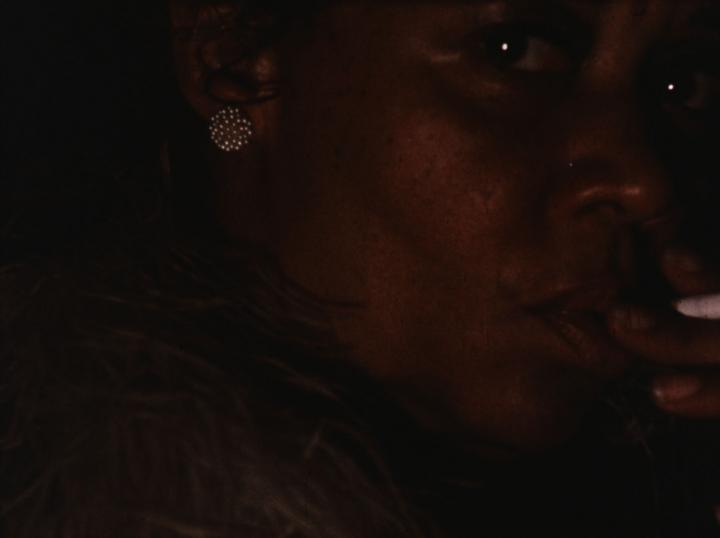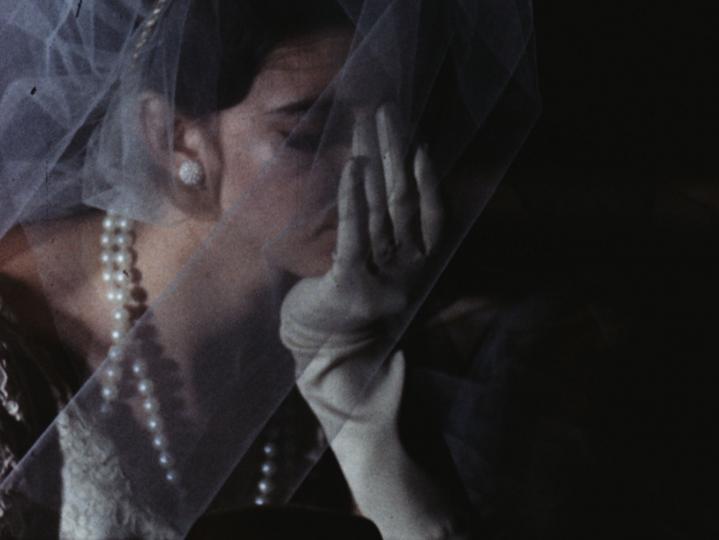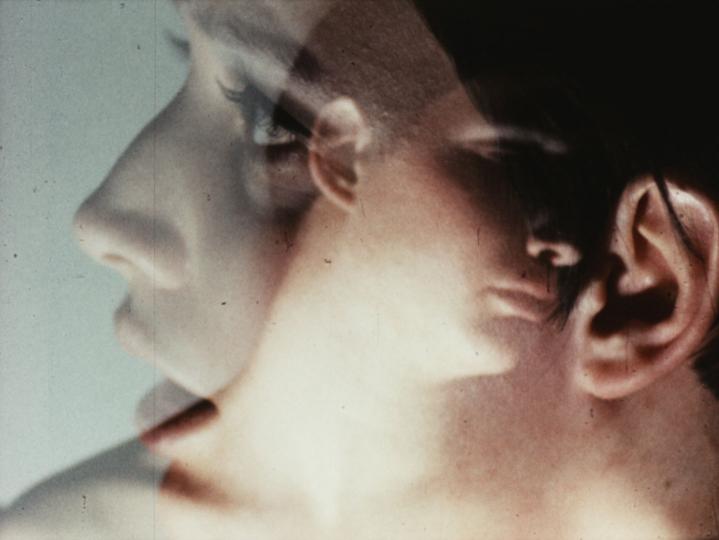“One must resolutely set to one side that the artist is eighteen years old, that he is a Negro; it isnot in itself extraordinary to be either; it is always extraordinary to be gifted.” - Charles Boultenhouse
In the mid 1960s, Edward Owens was an African-American teenager attending the Art Institute of Chicago when Gregory Markopoulos arrived to found the school’s film program. Owens, who was then studying painting and sculpture, had already been making 8mm movies for a few years; impressed by the maturity of his work, Markopoulos encouraged him to move to New York. Owens arrived in Manhattan in 1966 with Markopoulos, who quickly ushered him into the world of the city’s cultured demimonde, introducing him to figures like Andy Warhol, Gerard Malanga, Marie Menken, Gregory Battcock, and filmmaker-poet Charles Boultenhouse. Soon, Owens became romantically involved with Boultenhouse, and moved into the West Village apartment where Boultenhouse already lived with his lover of many decades, the legendary critic Parker Tyler, who accepted the arrangement.
Over the next four years, Owens created a cluster of films that display an increasing mastery of form, inspired by Markopoulos’s style but transformed into something purely his own. ‘With each subsequent struggle to complete a film he will leave us breathless with anticipation for his next work,’ Markopoulos remarked around this time. Owens’s featurette Tomorrow’s Promise shows the particular influence of his mentor’s Twice a Man, telling the elliptical tale of a broken romance between a man and a woman through strobing edits, layered images, and dramatically lit nudes. The sophistication of the film is all the more impressive when one considers that Owens was only eighteen years old when he made it. The extant reel of Tomorrow’s Promise still bears the filmmaker’s editing marks, as if a work in progress, though this is the version placed in distribution by Owens, and likely screened at the Fourth International Film Exhibition at Knokke-le-Zoute, Belgium in 1968. Even Tyler, who by the 1960s was highly critical of many new filmmakers, granted Owens curmudgeonly praise for the film, writing that Tomorrow’s Promise bore “a quality so pictorially exciting that the next thing he must do is listen to my advice.”
But the true breakthrough in Owens’s work can be seen in his following two films, Remembrance: A Portrait Study and Private Imaginings and Narrative Facts. Both were shot in Chicago, and bring his formidable repertoire of techniques to bear upon nonfictional subject matter: his own family and their circle. Remembrance pictures his mother, Mildered Owens, and her friends Irene Collins and Nettie Thomas. The women are shown drinking, smoking, and hanging out, their faces lit like 17th-century paintings, set to a soundtrack of pop songs. Tyler noted its achievements by listing Remembrance among the key works of the avant-garde in his landmark study Underground Film: A Critical History. Originally titled Mildered Owens: Toward Fiction, the achingly silent Private Imaginings and Narrative Facts focuses more directly on his mother, setting her regal depiction amidst delicate pulses of editing and oblique superimpositions, evoking the gap between the homebound realities of life and desires for far-off luxury and refinement.
Owens’s filmmaking career tragically ended when he was only twenty years old. By his own account, his addiction to drugs and an as-yet-undiagnosed bipolar disorder began to take their toll. After a near suicide attempt at a hotel, Owens left New York in 1971 to return to Chicago, where he finished his college degree but never completed another film, living the rest of his life out on the South Side where he was raised.
I had only discovered Private Imaginings and Narrative Facts in 2009, by reading its description in the catalog of the Film-makers’ Co-op. There was little other information about its maker on file, and I assumed he might be dead. But then I noticed that he had made the film when he was very young, and decided to look up his phone number, wondering if he might still be alive in his native Chicago. One of the numbers worked, and over several more phone calls I interviewed Edward for many hours. It was from these discussions that numerous biographical details emerged. He was overjoyed that someone had seen and loved his film after so many years, and had forgotten that the print was even at the Co-op. His conversations were full of salty humor and explicit gossip, but I also heard the voice of a much older man, vaguely alluding to medical problems, and speaking of dreams that had never come to pass. The narrative facts of daily existence had long overtaken the private imaginings of his youth. Only a few months after I first contacted him, Edward passed away, at just over 60 years old.
Owens’s distribution records note that Jonas Mekas planned a solo screening of his work at the Film-Maker’s Cinematheque in 1968. As far as we know, tonight’s event is the first one-person exhibition of his work since the 1960s. - Ed Halter
Programme:- Private Imaginings and Narrative Facts (1966, 16mm, color, 9 min)“A montage of still and moving images, mixing and alternating black people and white people, fantasy and reality, a presidential suite and a mother’s kitchen: a sensitive, poetic evocation in the manner of the film-maker’s Remembrance. Brilliantly colored and nostalgic, it comprises a magical transformation of painterly collage and still photographic sensibility into filmic time and space.” - Charles Boultenhouse(Edward Owens) may well be one of the few for whom 'amateur' and 'professional' need have no significance whatsoever: true to his own native talents, with grim determination uncanny, whether the mind in the arts is for or against beauty or its opposite twin, chaos. So that with each subsequent struggle to complete a film he will leave us breathless with anticipation for his next work." - Gregory Markopoulos on Edward Owens' film AUTREFOIS
- Remembrance: A Portrait Study (1967, 16mm, color, 6 mins)“The music is by Marilyn Monroe singing ‘Running Wild’ from Some Like It Hot, because it’s a film portrait of Nettie Thomas. She did floors in white women’s homes, like black women did to support their families in the olden days. My mother is sitting in a wicker chair with an ostrich feather boa, a grey worsted wool skirt, a silk belt. For her portrait, I used ‘All Cried Out’ by Dusty Springfield...I was advised by Gregory Markopoulos not to play the music. Because Gregory didn’t think it was proper.” - Edward Owens
- Tomorrow's Promise (1967, 16mm, color, 45 min)"Edward Owens shows in "Tomorrow's Promise" a style pictorially so exciting that the next he must do is listen to my advice." - Parker Tyler“Edward Owens has achieved in Tomorrow’s Promise a quality so exceedingly high that one is forced to term certain moments of the film bad only because they are surrounded by such rich nuance. Tomorrow’s Promise deals with complex, intellectually exciting subject matter yet remains unobscure. The nudity of the film is handled in a fresh and climactic way. Tomorrow’s Promise contains almost separate films and Mr. Owens has successfully assembled them toward one goal: vacantness. Mr. Owens appears to be a classicist adhering to his own valid principles of excellence in the arts … there will be no limit to the amount of beauty and excoriation he may choose to show us.” - Gregory Battcock“Tomorrow’s Promise is a film about vacantness. Which physically does ‘begin’, reversed, upside down on the screen (but by what premise is it supported? , e.g. the film, so chimerical as life itself, follows its own way), suddenly another such position is taken (not in reverse), this time by a male figure and soon, in this same section, the girl of the reversed image reappears posed in a different way; a way obsessed by ‘mood’. Then a technical play of in-the-camera-editing occurs, more intense, brighter than in the first, reversed section. There are several inter-cuts which serve, in this and each subsequent section unto the end, as relative links into the final section: which is actually the ‘story’. The story the protagonist and her hero try to tell in their way is apophysis; except that ‘pictures’, clear visions take the place of words. My film could have been edited with precise tensions and a lucid straight narrative, but it was my aim to ‘re-create’ the protagonist of my personal life.” - Edward Owens
Screening format: 2K (New digital transfer expressly made for this screening)
Special thanks to Filmmakers Coop.
http://cineinfinito-cineinfinito.blogspot.com.es/p/cineinfinito-edward-o...









